Share

Let's Talk Religion
Shams al-Ma'arif - The Most Dangerous Book in the World?
•
In this episode, we explore the most (in)famous book of occult sciences in the history of the Islamicate World: the Shams al-Ma’arif (Sun of Knowledge).
WARNING: I am quoting from the book in this episode. Those concerned about its dangers might want to avoid listening to this episode.
Sources/Recomended Reading:
- Al-Buni, Ahmad ibn ‘Ali. “The Sun of Knowledge (Shams al-Ma’arif): An Arabic Grimoire in Selected Translation”. Translated by Amina Inloes & Illustrated by J.M. Hamade. Revelore Press, 2021.
- Coulon, Jean-Charles (2022). “Amulets and Talismans in the Earliest Works of the Corpus Bunianum”. In “Amulets and Talismans of the Middle East and North Africa in Context” (Edited by Marcela A. Garcia & Petra M. Sijpesteijn). Brill.
- Gardiner, Noah (2012). “Forbidden Knowledge? Notes on the production, transmission, and reception of the major works of Ahmad al-Buni”. Journal of Arabic and Islamic Studies 12 (2012). University of Michigan.
- Gardiner, Noah (2014). “Esotericism in a manuscript culture: Aḥmad al-Būnī and his readers through the Mamlūk period”. Doctoral dissertation, University of Michigan.
- Gardiner, Noah (2017). “Esotericist Reading Communities and the Early Circulation of the Sufi Occultist Aḥmad al-Būnī’s Works”. Arabica 64 (2017) 405-441. Brill.
- Gardiner, Noah (2017). “Stars and Saints: The Esotericist Astrology of the Sufi Occultist Ahmad al-Buni”. Magic, Ritual, and Witchcraft (Spring 2017). University of Pennsylvania Press.
- Melvin-Koushki, Matthew & Noah Gardner (2017). "Islamicate Occultism: New Perspectives". Brill.
- Saif, Liana (2015). "The Arabic Influences on Early Modern Occult Philosophy". Palgrave Macmillan.
- Saif, Liana; Francesca Leoni; Matthew Melvin-Koushki & Farouk Yahya (2021). "Islamicate Occult Sciences in Theory and Practice". Brill.
- Saif, Liana (2022). “Narratives of Danger: The Sun of Knowledge in Arabic Occulture”. Article: https://www.leidenislamblog.nl/articles/narratives-of-danger-the-sun-of-knowledge-in-arabic-occulture
- Savage-Smith, Emily (ed.) (2004). "Magic & Divination in Early Islam". Ashgate Publishing.
- Van Bladel, Kevin (2009). "The Arabic Hermes: From Pagan Sage to Prophet of Science". Oxford University Press.
- Varisco, Daniel Martin (2017). “Illuminating the Lunar Mansions (manazil al-qamar) in Sams al-Ma’arif”. Arabica 64 (2017), 487-530. Qatar University.
- "The Openings Revealed in Makka", al-Futuhat al-Makkiyya by Ibn 'Arabi. Translated by Eric Shu'ayb Winkel. Vol. 1. Pir Press.
- “Shams al-Ma’arif al-Kubra”. Arabic Printed Edition by Dar al-Mizan.
#occult #magic #middleeast
More episodes
View all episodes

151. What is Sharia Law, Really?
33:52||Ep. 151What is Sharia law, really? In this video, we break down the meaning of Sharia, explain where it comes from, and discuss some of the most misunderstandings you’ve probably heard online.Find me and my music here:https://linktr.ee/filipholmSupport Let's Talk Religion on Patreon: https://www.patreon.com/letstalkreligion Or through a one-time donation: https://paypal.me/talkreligiondonateSources/Recommended Reading:Hallaq, Wael (2004). "The Origins and Evolution of Islamic Law". Cambridge University Press. Hallaq, Wael (2009). "Sharia: Theory, Practice, Transformations". Cambridge University Press. Kamali, Mohammad Hashim, 'Shariah: Meaning, Definition, History, and Sources', Shariah and the Halal Industry (New York, 2021; online edn, Oxford Academic, 19 Aug. 2021).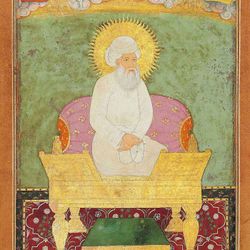
150. Abd al-Qadir al-Jilani & The Qadiri Sufi Order
47:48||Ep. 150The Qadiriyya is often called the most widespread Sufi order in the world — but how did one 12th-century mystic in Baghdad inspire a global movement that still thrives today?This episode explores the life and legacy of Abd al-Qadir al-Jilani, the saint revered across the Muslim world as Ghaus al-A‘zam — “the greatest helper.”From medieval Baghdad to North Africa, Turkey, South Asia, and beyond, we trace how his teachings spread across continents, shaping Islamic spirituality for nearly 900 years.Find me and my music here:https://linktr.ee/filipholmSupport Let's Talk Religion on Patreon: https://www.patreon.com/letstalkreligion Or through a one-time donation: https://paypal.me/talkreligiondonateSources/Recommended Reading:Abun-Nasr, Jamil M. (2007). "Muslim Communities of Grace: The Sufi Brotherhoods in Islamic Religious Life". C Hurst & Co Publishers Ltd.Knysh, Alexander (2012). "Islamic Mysticism: A Short History". BRILL. Malik, Hamza (2018). "The Grey Falcon: The Life and Teaching of Shaykh 'Abd Al-Qadir Al-Jilani". BRILL.Trimingham, John Spencer (1971). "Sufi Orders in Islam". Oxford University Press.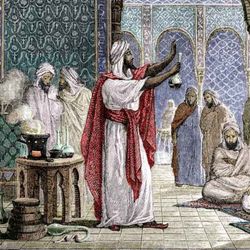
149. What is Alchemy?
01:03:12||Ep. 149Discover the fascinating history of alchemy — the ancient art that aimed to turn base metals into gold. From mystical experiments to the birth of modern chemistry, this video explores how alchemists shaped science, philosophy, and the human quest for knowledge.Find me and my music here:https://linktr.ee/filipholmSupport Let's Talk Religion on Patreon: https://www.patreon.com/letstalkreligion Or through a one-time donation: https://paypal.me/talkreligiondonateSources/Recommended Reading:Abt, Theodore (ed.) (2007). "Corpus Alchemicum Arabicum: Book of the Explanation of the Symbols Kitab Hall Ar-Rumuz". Psychological Commentary by Marie-Louise Von Franz. Living Human Heritage Publications. Adamson, Peter (2021). "Al-Rāzī". Great Medieval Thinkers. OUP USA.Corriente, Federico & Ed Emery (translated by) (2004). "Twenty-seven Muwashshashaat and One Zajal by Ibn al-'Arabi of Murcia (1165-1240)". Dodge, Bayard (translated by) (1998). "The Fihrist: A 10th Century Ad Survey of Islamic Culture". Kazi Pubns Inc. Grimes, Shannon (2018). "Becoming Gold: Zosimos of Panopolis and the Alchemical Arts in Roman Egypt". Rubedo Press.Hirtenstein, Stephen (translated by) (2018). "The Alchemy of Human Happiness (Mystical Treatises of Muhyiddin Ibn 'Arabi)". Anqa Publishing.Principe, Lawrence (2013). "The Secrets of Alchemy". University of Chicago Press.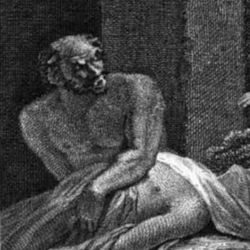
148. What Is a Ghoul? (The Terrifying Monster of Arabian Myth)
27:15||Ep. 148Long before modern horror imagined zombies or demons, ancient Arabic folklore spoke of the Ghoul (غول) — a terrifying shape-shifting creature haunting deserts, ruins, and graveyards. In this video, we uncover the true origins of the Ghoul: its roots in pre-Islamic Arabian mythology, its transformation through Islamic tradition, and its lasting influence on global horror culture.Find me and my music here:https://linktr.ee/filipholmSupport Let's Talk Religion on Patreon: https://www.patreon.com/letstalkreligion Or through a one-time donation: https://paypal.me/talkreligiondonateSources/Recommended Reading:Al-Rawi, Ahmed (2009). "The Mythical Ghoul in Arabic Culture". Article. The University of California.Al-Rawi, Ahmed (2009). "The Arabic Ghoul and its Western Transformation". Folklore 120 (December 2009): 291–306. Lebling, Robert & Tahir Shah (2014). "Legends of the Fire Spirits: Jinn and Genies from Arabia to Zanzibar. I.B. Tauris.Henninger, Joseph (2004). "Beliefs in Spirits among the Pre-Islamic Arabs". In "Magic and Divination in Early Islam". Edited by Emile Savage-Smith. Ashgate Publishing Company.Rašić, Dunja (2024). "Bedeviled: Jinn Doppelgangers in Islam and Akbarian Sufism". State University of New York Press."The Annotated Arabian Nights: Tales from 1001 Nights". Edited by Paulo Lemos Horta. Translated by Yasmine Seale. Liveright Publishing Corporation.Online version of Qazwini's "Wonders of Creation": https://shamela.ws/book/30006/310?utm_source=chatgpt.com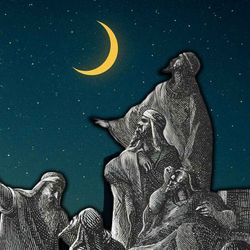
147. The Sabians of Harran: A Lost Religion
01:00:30||Ep. 147Who were the mysterious Sabians of Harran? This forgotten group of ancient star-worshippers left behind one of history’s most fascinating mysteries. We look at the contemporary sources to (try to) find out what these ancient peoples actually believed and practiced.Find me and my music here:https://linktr.ee/filipholmSupport Let's Talk Religion on Patreon: https://www.patreon.com/letstalkreligion Or through a one-time donation: https://paypal.me/talkreligiondonateAlso check out the Let's Talk Religion Podcast: https://open.spotify.com/show/0ih4sqtWv0wRIhS6HFgerb?si=95b07d83d0254bSources/Recommended Reading:Dodge, Bayard (translated by) (1970). "The Fihrist of al-Nadim: A Tenth Century Survey of Muslim Culture". Columbia University Press. Gunduz, Sinasi (1994). "The Knowledge of Life: The Origins and Early History of the Mandaeans and Their Relation to the Sabians of the Qur'an and to the Harranians". Oxford University Press.Hjärpe, Jan (1972). "Analyse critique des traditions arabes sur les Sabéens Harraniens". Doctoral thesis. University of Uppsala.Moses Maimonides - "The Guide for the Perplexed - A New Translation". Translated with commentary by Lenn E. Goodman & Philip I. Lieberman.Stanford University Press.Tardieu, Michel (1986). "Sabiens coraniques et Sabiens' de Harran'. Journal Asiatique 274, 1-44.Tardieu, Michel (1987). "Les calandriers en usage a Harran d'aprés les sources arabes et le commentaire de Simplicius a la physique d'Aristotle". In Ilsetraut Hadot, ed., "Simplicius: Sa vie, son aevre, sa survie. Acted du colloque international de Paris (28 Sept.-1 Oct. 1985)". Berlin, de Gruyter, 40-57).Van Bladel, Kevin (2009). "The Arabic Hermes: From Pagan Sage to Prophet of Science". OUP USA.Van Bladel, Kevin (2017). "From Sasanian Mandaeans to Sabians of the Marshes". Brill.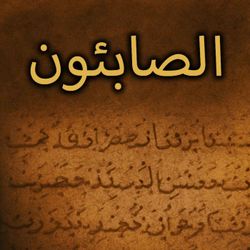
146. Who were the Sabians? - The Lost Religion of the Quran
26:49||Ep. 146Who were the Sabians (Ṣābi’ūn) mentioned in the Quran? Were they a mysterious religious community, early monotheists, Mandaeans, star-worshippers, or something else entirely? In this video, we explore the fascinating question of the identity of the Sabians, drawing on Islamic sources, Quranic references, historical accounts, and scholarly debates.Music by Filip Holm (me)Find me and my music here:https://linktr.ee/filipholmSupport Let's Talk Religion on Patreon: https://www.patreon.com/letstalkreligion Or through a one-time donation: https://paypal.me/talkreligiondonateSources/Recommended Reading:Gunduz, Sinasi (1994). "The Knowledge of Life: The Origins and Early History of the Mandaeans and Their Relation to the Sabians of the Qur'an and to the Harranians". Oxford University Press.Van Bladel, Kevin (2009). "The Arabic Hermes: From Pagan Sage to Prophet of Science". OUP USA.Van Bladel, Kevin (2017). "From Sasanian Mandaeans to Sabians of the Marshes". Brill.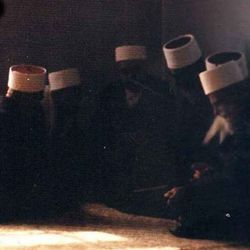
145. Who are the Druze?
01:01:19||Ep. 145Who are the Druze? In this video, we explore the history, culture, and beliefs of the Druze people — a small but influential religious community mainly found in Lebanon, Syria and Jordan.Find me and my music here:https://linktr.ee/filipholmSupport Let's Talk Religion on Patreon: https://www.patreon.com/letstalkreligion Or through a one-time donation: https://paypal.me/talkreligiondonateSources/Recommended Reading:Betts, Robert Brenton (2009). "The Druze". Yale University Press.Daftary, Farhad (2007). "The Isma'ilis: Their history and doctrines". Cambridge University Press.Firro, Kais M. (2011). "The Druze Faith: Origin, Development and Interpretation". Arabica 58 (2011) 76-99. Brill.Hirschberg, H.Z. (1981). "The Druzes". In "Religion in the Middle East: Three Religions in Concord and conflict (ed. Arberry, A.J. & Beckingham, C.F.), vol 2. Cambridge University Press.Hitti, Philip K. (2007). "The Origins of the Druze People and Religion: With Extracts from their Sacred Writings." Saqi Books. Hodgson, Marshall G.S. (1962). "Al-Darazi and Hamza in the Origins of the Druze Religion". Journal of the American Oriental Society, Vol 82, No. 1.Walker, Paul E. (2010). "Caliph of Cairo: Al-Hakim bi-Amr Allah, 996-1021". The American University in Cairo Press.
144. Who are the Jesuits?
35:23||Ep. 144The Jesuits, officially known as the Society of Jesus, are one of the most influential religious orders in the Catholic Church. Founded in 1540 by St. Ignatius of Loyola, they have played a central role in education, missionary work, science, and global history. This video explores who the Jesuits are, their origins, their impact on the Counter-Reformation, and their lasting influence on culture, politics, and spirituality.Find me and my music here:https://linktr.ee/filipholmSupport Let's Talk Religion on Patreon: https://www.patreon.com/letstalkreligion Or through a one-time donation: https://paypal.me/talkreligiondonateSources/Recomended Reading:Freidrich, Markus (2023). "The Jesuits: A History". Princeton University Press.Rowman & Littlefield Publishers.O'Malley, John W. (2014). "The Jesuits: A History from Ignatius to the Present".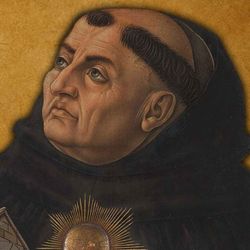
143. Thomas Aquinas - the Greatest Christian Philosopher?
47:03||Ep. 143Discover the life, works, and enduring influence of Thomas Aquinas (1225–1274), the Dominican friar whose synthesis of faith and reason transformed philosophy and theology.Find me and my music here:https://linktr.ee/filipholmSupport Let's Talk Religion on Patreon: https://www.patreon.com/letstalkreligion Or through a one-time donation: https://paypal.me/talkreligiondonateSources/Recomended Reading:Aquinas, Thomas (1998). "Selected Writings". Penguin Classics.Davies, Brian & Elenore Stump (ed.) (2012). "The Oxford Handbook of Aquinas". OUP USA.Kretzmann, Norman & Eleonore Stump (ed.) (2010). "The Cambridge Companion to Aquinas". Cambridge University Press.The Summa Theologica Translation by Ave Maria Press (1981).